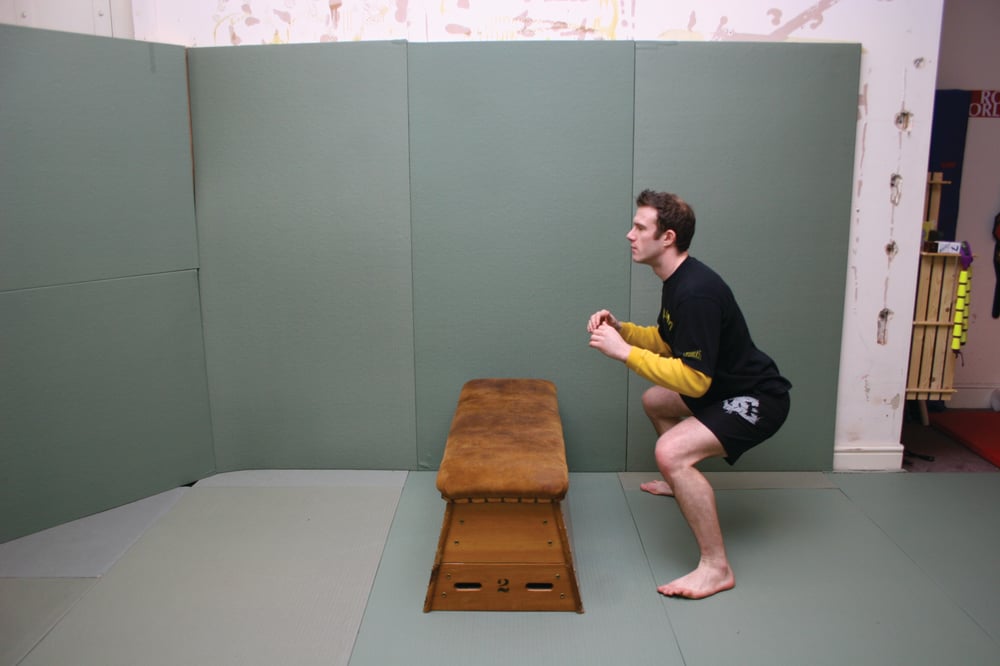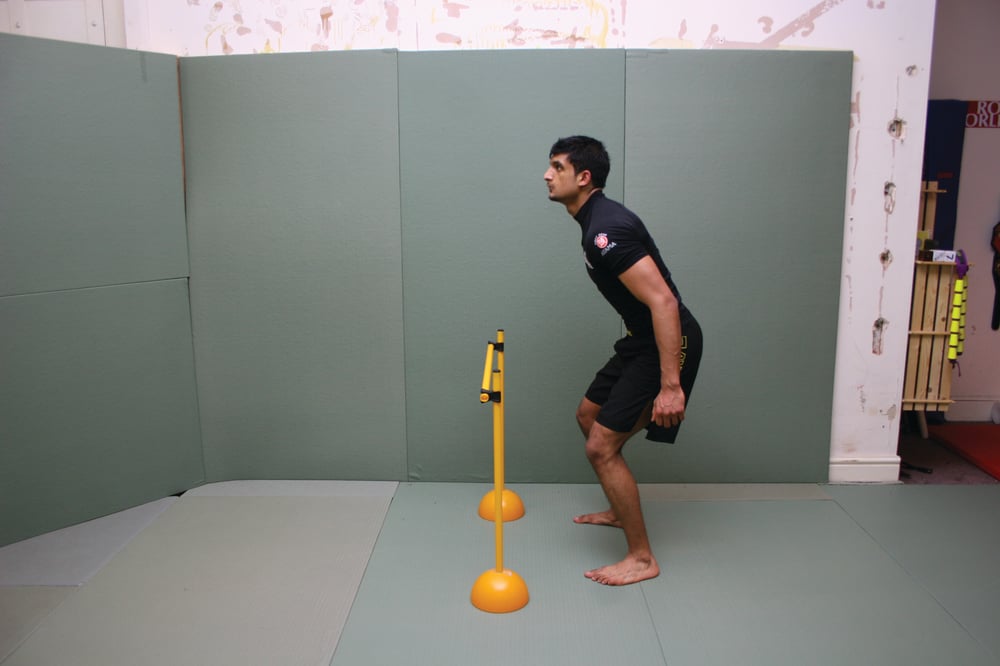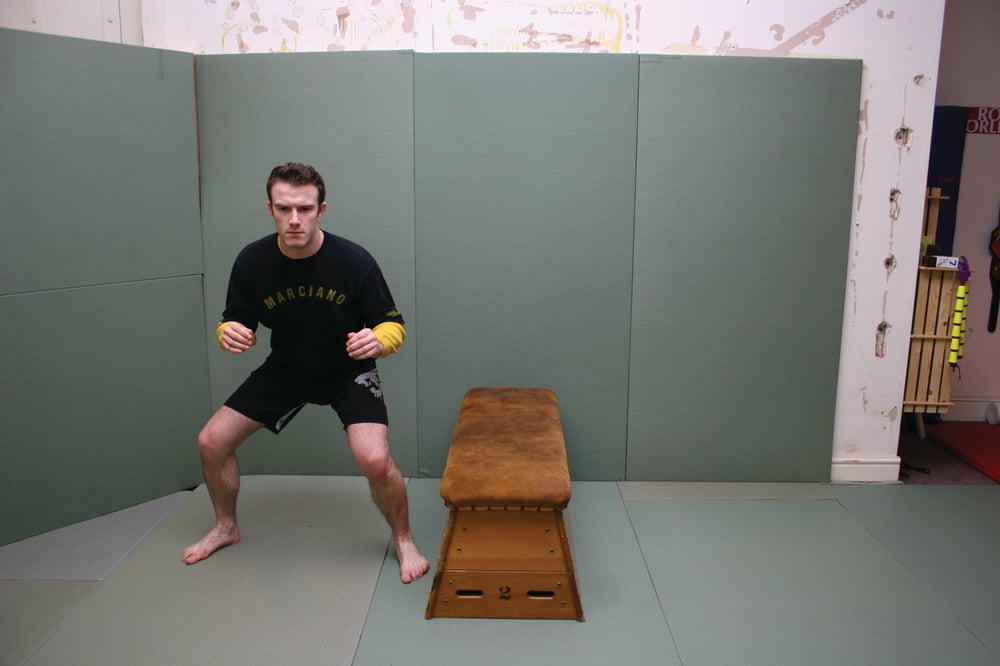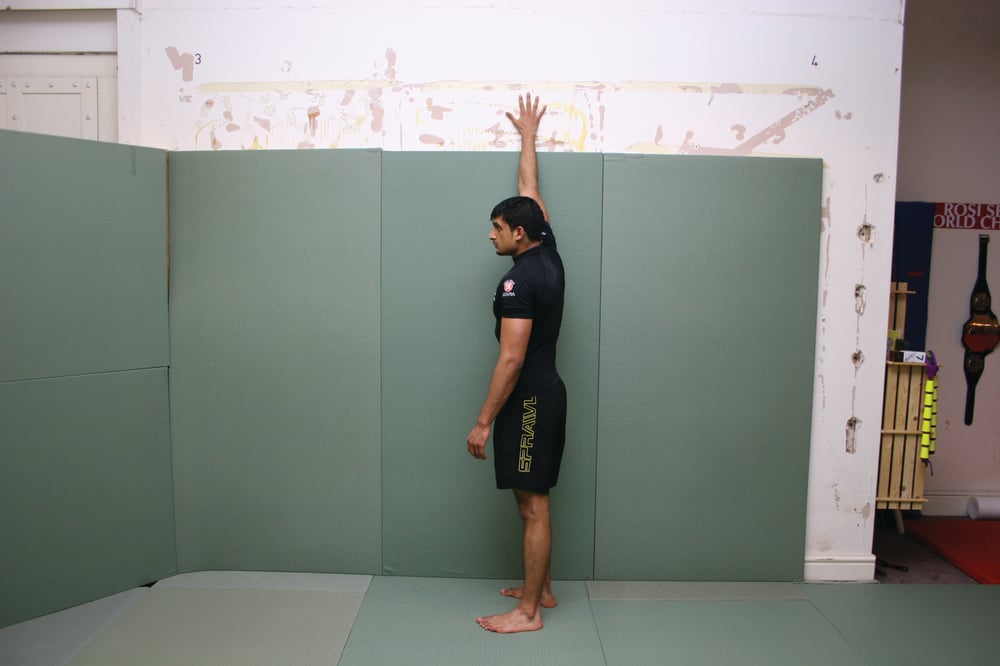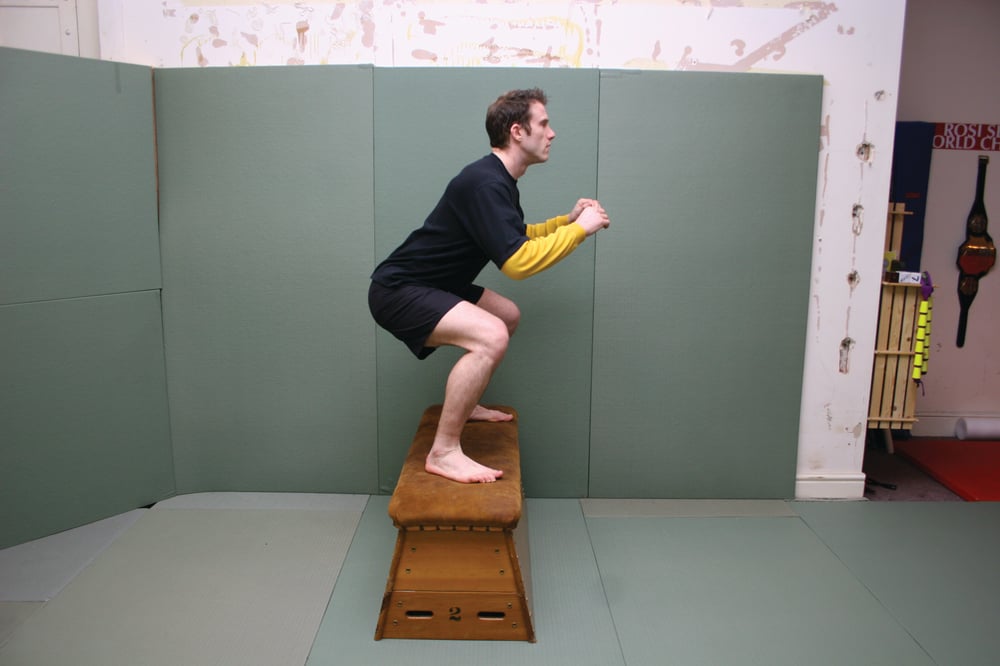
Issue 024
April 2007
Last time we looked at why plyometric training is beneficial to that of a mixed martial arts athlete or fighter. Through using plyometrics, it is possible to increase speed, strength and agility, three attributes MMA fighters need when in the ring or cage. What follows is a selection of exercises designed to get you on the road to training in plyometrics.
Box jump
Stand in front of a box set at the desired height. Dip slightly, then explode onto the box. Drive with the legs and swing the arms up and forwards for more momentum. As with all plyometric style exercises the landing should be as quiet as possible, as noise means that energy has been lost.
Hurdle jump
This exercise is similar to the box jump, but involves jumping over a hurdle. Try to land on the toes as quietly as possible with good balance (imagine a gymnast landing at the end of a routine). This is commonly referred to as ‘sticking’ the landing. Once the hurdle jump and landing are perfected, multiple hurdles can be placed in a row with a short contact in between each.
Lateral box jump
This drill is the same as the box jump, except that instead of standing in front of the box you stand to one side. Explode upwards and sideways and stick the landing, then step down to the opposite side. The height of box you can use for this drill is much less than the standard box jump height.
Standing vertical leap
From a standing position, dip into a shallow squat position then drive up with the legs, using the arms for extra drive, and jump as high as possible. This is a good test of explosive ability which is very easy to do. The easiest way to test this is to chalk the fingertips (or hold some chalk in the hand), stand next to a wall and with the arm outstretched overhead, make a mark. Now perform the vertical leap and at the highest position touch the wall to make another mark. The difference between the two marks is your result. This is a great way to track progress, and very hard to cheat on.
Depth jump
This involves jumping from a box to the floor and upon landing immediately exploding up into a vertical leap. If you have good reactive ability you should be able to jump higher using this technique than from a standing start. When you are comfortable with this drill you can start using more complex variations, for example dropping from a mid sized box onto the ground then onto a high box equal to or higher than your best box jump.
Alex Gold is a trainer and therapist specialising in working with sportsmen to increase performance


